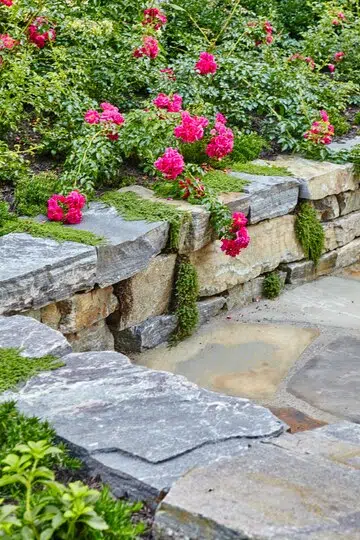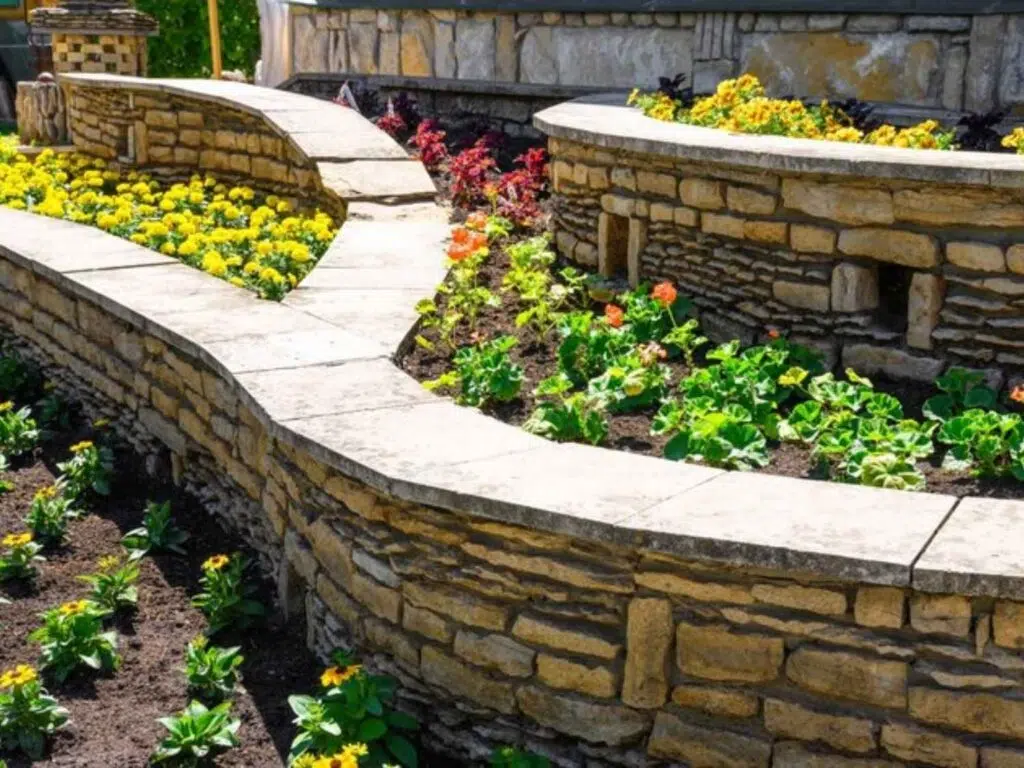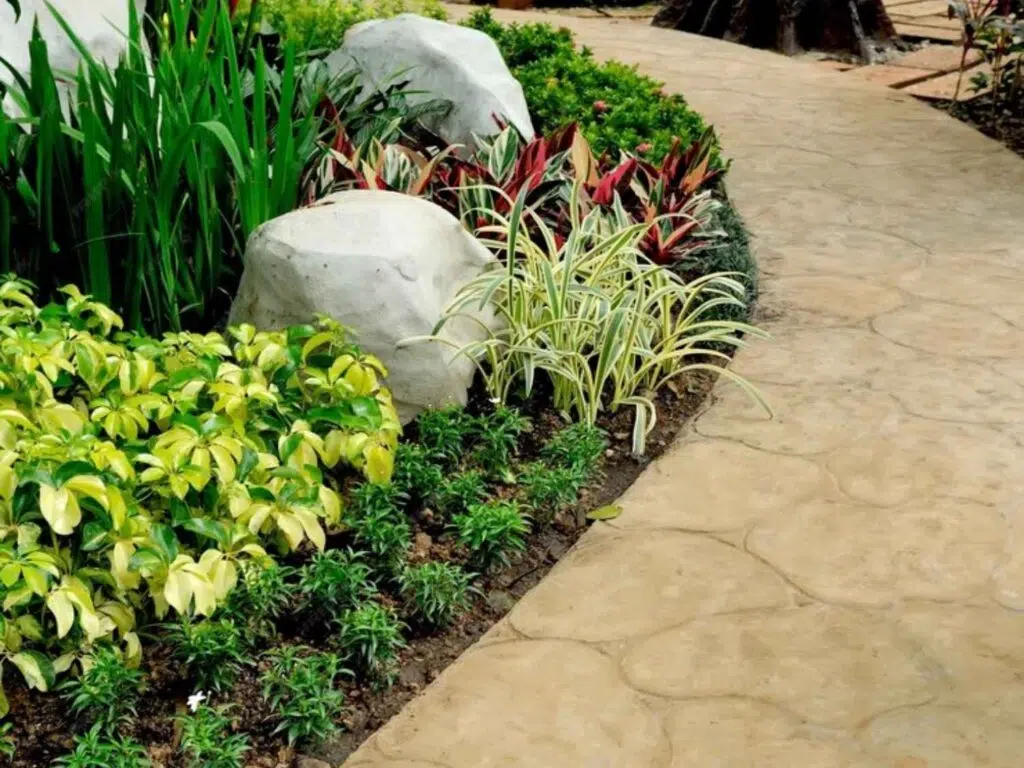DIY Guide to Building a Inexpensive Retaining Wall
In the heart of Seattle, Washington, where hillsides are as common as raindrops, a Inexpensive retaining wall can be a practical and stylish solution to prevent erosion and create level landscaping.
Wall retention is a rigid structure that holds back soil at different levels. They are often used in areas with steep slopes to prevent erosion and create usable space. Structures can be made from various materials like wood, concrete, stone, or gabions.
But someone mentioned that it must be costly!
Imagine transforming your Seattle backyard into a serene oasis without overspending. It’s possible with a little creativity and planning. We’ll explore the cheapest retaining wall ideas and provide tips for building a cost-effective inexpensive retaining wall that complements your home.
By building a wall for retaining purposes, you can save on labor costs and customize the design to fit your specific needs and budget. From choosing the right materials to constructing the wall step-by-step, we’ll guide you through the entire process.
The benefits of adding resistant structures to your outdoors
See your garden become a terraced beauty instead of a steep, uneven slope. That is reinforcing wall power!
-
Keeping soil stable on hills:
To protect your property from landslides and stop soil erosion, build a retaining wall on a slope. These structures provide a strong base by keeping dirt, making your outside area more secure and usable.
-
Creating level zones:
To create level areas on your hilly land, build a wall with pavers or other materials. These spaces can be used for patios, gardens, or even outside seating areas, giving you a flexible and delightful spot to unwind and host guests.
-
Controlling water flow:
Preservation walls are a useful tool for managing water flow, which can assist in stopping erosion and property damage. This is especially important in areas that frequently experience flooding or severe rain. You can protect your investment and keep a lovely outdoor setting by diverting water from your house and the surroundings.
-
Raising the appearance of your property:
A well-planned decorative wall may give the outdoors an appearance of refinement and elegance. To create an organized and aesthetically pleasing look, select materials that go well with the architecture and style of your house.
-
Enhancing property value:
The value of your property can be considerably raised with a retention wall. It not only makes it visually appealing, but it also increases functioning and lowers the possibility of erosion-related damage. Prospective purchasers will recognize your home’s increased worth and desirability.
So why hold off? Plan your project now to take advantage of all the positive aspects that it could bring to its surroundings.
A look at the variety of retaining wall types
Whether you’re looking for a classic stone wall or a modern concrete design, there’s a perfect option to suit your needs. There are numerous designs for barriers to erosion, and each has many benefits and drawbacks. Here are a few examples of the most typical kinds:
-
Walls of gravity
Materials: Masonry blocks, stone, or concrete.
How they work: The lateral pressure of the soil is resisted by these walls using their weight.
Benefits: visually beautiful, long-lasting, and little maintenance.
Drawbacks: need a substantial foundation and costly.
-
Walls that cantilever
Material: concrete reinforcement.
How they work: These walls feature a cantilevered section that extends above the ground to support the soil, and they are fixed to the surface of the ground.
Benefits: Low cost and suitable for higher walls.
Drawbacks: Careful planning and building are necessary to avoid flipping.
-
Walls of counterfort
Material: concrete reinforcement.
How they work: The walls are reinforced further by vertical buttresses or counterforts.
Benefits: relatively stable and suitable for very tall walls.
Drawbacks: Design and construction might be difficult.
-
Walls made of gabions
Material: Rocks or other objects placed inside metal baskets.
How they work: The soil pressure can be adjusted by these walls since they are flexible.
Benefits: Low cost, safe for the environment, and suitable for usage in areas with low soil quality.
Drawbacks: Compared to other wall kinds, it could require more upkeep.
-
Sheet pile walls
Materials: metal sheets that interlock.
How they work: A continuous barrier is formed by driving these walls into the ground.
Benefits: They work well for temporary and permanent buildings and can be employed in deep excavations.
Drawbacks: Placement may cause noise disturbance.
-
Soil nail walls
Materials: bars or rods made of steel.
How they work: Steel rods in the ground behind the wall stabilize these structures.
Benefits: cheap and useful in challenging ground.
Drawbacks: Installation requires specific equipment and knowledge.
Selecting the proper material for retaining walls
The longevity, aesthetics, and overall effectiveness of a wall built for retention depend heavily on the material choice. Your choice of material will be influenced by several variables, such as your spending limit, the height of the walls, the state of the soil, and your tastes.
The effectiveness, longevity, and appearance of a retaining wall depend largely on the material you choose. Factors like budget, wall height, soil conditions, and personal preferences all play a role in this decision.
Common materials include treated timber, which is affordable and easy to install for smaller walls, concrete, which offers durability for taller walls, and stone or brick, known for their aesthetic appeal but at a higher cost. In areas with heavy rainfall or erosion, materials like stone or concrete blocks are ideal for their moisture resistance and strength.
Ultimately, your choice should balance functionality, aesthetic, and cost to suit the needs of your property.

Here’s an overview of some common inexpensive retaining wall materials:
-
Stone retaining wall
Appearance: Natural stone walls complement a variety of designs with their classic and rustic looks.
Durability: Stone is a strong material that can tolerate extreme weather and loads.
Cost: Depending on the kind of stone used and the intricacy of the design, the price of stone walls can change.
-
Retaining wall with wood
Appearance: Wood retaining walls can give your terrain a cozy, organic vibe.
Durability: Treated lumber can be used to build durable walls, but to keep them from rotating and decaying, they may need to be maintained regularly.
Cost: Compared to stone or concrete walls, wood barriers are typically less expensive.
-
Retaining wall with concrete blocks
Appearance: Concrete blocks provide a sleek, modern appearance.
Durability: Heavyweights and storms are no match for the robustness of concrete blocks.
Cost: Concrete blocks are a reasonably priced choice.
-
Poured concrete retaining wall
Appearance: You can modify the look of poured concrete walls to achieve the look you want.
Durability: Concrete that has been formed is a very resilient substance that can resist severe weather conditions.
Cost: Although poured concrete structures can cost more than other designs, they provide remarkable lifespan and durability
Planning and preparation before starting
It is important that you thoroughly plan and prepare before starting your affordable retaining wall project. This will allow you to prevent costly mistakes and guarantee that your wall is practical and visually appealing.

Here are some important factors to take into consideration:
Ø Determine the size and goal
What is your main purpose? Is it to support a structure, stop erosion, or make a level space for landscaping? Understanding the objective will help you decide how high and wide the wall must be.
Ø Review of the site’s conditions
Pay attention closely to the land’s slope and the type of soil. You can use this information to select the best design and materials for your retaining wall. Consider existing structures and utilities that may be affected by construction.
Ø Create a retaining wall design
Make a rough drawing or blueprint of the layout you want for the wall.
Take into factors like your personal preferences, the natural environment around you, and the design of your house. Don’t forget to stay within your budget when designing.
Ø Get the permits you need
Find out whether you need any permits for your retaining project by contacting your local building authority. Walls that are situated in zones or that are higher than a certain height may need permits.
Ø Choosing the proper materials.
Make sure the materials you choose are appropriate for your development and reasonably priced. Take into consideration factors including elegance, simple installation, and durability. Often used elements for low-cost retention structures are gabions, treated lumber, concrete blocks, and landscaping supplies.
Ø Estimate costs
Ensure that your wall retention project has a well-defined budget. Consider the cost of supplies, labor, permits, and any necessary equipment. Explore cost-saving options, such as purchasing supplies in bulk or participating in the project yourself. You can increase the possibility that your low-cost retaining wall installation idea will be successful and result in a gorgeous and useful addition to your territory by properly planning and organizing it.
Completing your walls for retention project
The first step in constructing a sturdy retaining wall is to dig a trench for the foundation and lay a solid base. The height of the wall and the kind of soil will determine the trench’s depth. For further stability, add a layer of gravel and think about using a geotextile fabric.
Select your desired building material, such as gabions, wood, stone, or concrete blocks, and then proceed with the necessary construction procedures. Use weep holes, a gravel layer, and a drainage pipe to provide adequate drainage.
Lastly, to stop settling, fill the area behind the wall with a backfill material that drains properly and compacts it.
Tips for cost savings
By following these tips, you may build a cheap retaining wall without compromising quality.
- Finding supplies: For budget-friendly solutions, research local providers, scrap yards, and online marketplaces.
- Equipment and tools: To save money, rent, borrow, or search for used tools.
- Labor-saving techniques: To cut expenses, assemble a team, utilize effective tools, and plan.
- Maintenance: To reduce long-term expenses, check your wall frequently, take care of problems right away, make sure drainage is adequate, and manage weeds.
DIY vs. pro: balancing budget and expertise for your retaining wall
Building a small retaining wall can be a satisfying DIY project, but it requires specialized knowledge and supplies. You can cut labor costs by doing the project yourself when you have the time and are confident in your ability. Working with a reputable organization is a better option if you’re unsure or want to avoid hassles. DIY can be a viable option for modest fences, particularly if you’re not afraid of construction work. But, before making a choice, you must evaluate the project’s intricacy as well as your abilities. Seeking professional advice can be quite beneficial when you’re not sure.
On the other hand, working with a reputable company is frequently the ideal choice, whether you’re searching for a high-quality retention structure or need to replace an old one. They possess the knowledge and experience required to ensure a strong, long-lasting wall.
Ultimately, deciding to do it yourself or hire a professional is a matter of personal preference and circumstance. When making a decision, consider your desired level of involvement, time constraints, and budget. Keep in mind that DIY projects can lower labor costs, but professional technicians guarantee quality.
In Seattle, WA, building a cheap retaining wall can improve your property’s attractiveness. You may build a sturdy, eye-catching structure at the lowest possible cost by using the information and recommendations provided in this instructional article.
When will you begin building your retention wall?
For professional advice and assistance, get in touch with Contemporary Home Construction. Our team can assist you in designing, building, and maintaining a beautiful and efficient retaining wall that will benefit your property for years to come.
For more information on our wall construction services and to receive a quote, please visit our website or call us today.
You can always count on us for a wide range of top-notch services tailored to meet your specific needs.

Best retaining wall contractor seattle, WA
Contemporary Home Construction, LLC would love your feedback. Post a review of our profile.
What is the best material for a retaining wall in Seattle’s climate?
Seattle’s climate is described by frequent rainfall and moderate temperatures. Therefore, materials that are resistant to moisture and decay, such as treated lumber, concrete, or stone, are ideal for this region.
What is the price of constructing an erosion wall?
The size, kind of materials, and complexity of the project all affect how much it costs to build an erosion wall. However, you will have to pay ranging from a few hundred dollars to several thousand dollars.
Do I need a permit to build a retaining wall in Seattle?
Yes, you will likely need a permit to build a retaining wall in Seattle, especially if the wall is taller than a certain height or is in a designated zone. Check with your local building department for specific requirements.
When should I consider replacing my retaining wall?
If your existing retaining wall is showing signs of damage, such as cracks, leaning, or erosion, it may be time for a retaining wall replacement. Additionally, if the wall is no longer serving its intended purpose or is becoming an eyesore, it may be worth considering replacement.
Is it possible to build a terraced garden with a retaining wall?
Indeed, on sloped sites, retaining walls make a terrific method for constructing tiered gardens. Increasing aesthetic gardening can aid in preventing erosion.
Contemporary Home Construction, llc
Office Hours
11335 NE 122nd Way Suite 105,
Kirkland, WA 98034, United States
M- F: 8:30 am – 7:30 pm
Weekends by appointment
Get in Touch
